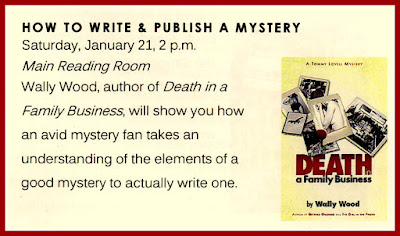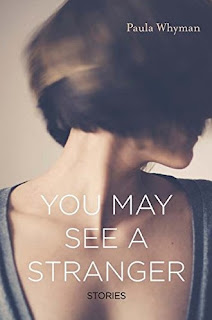I picked up
Sisterland, Curtis Sittenfeld's fourth (2013) novel because I like what she's written in
The New York Times Book Review where she's a regular contributor, and because I thoroughly enjoyed her recent story in
The New Yorker, "
Gender Studies."

I liked
Sisterland so much and feel Sittenfeld's writing has so much to teach me that I've now read the book twice. The next time, I'll go through it with a highlighter, marking the sentences and paragraphs that speak to me especially. So what do I like about it?
The story is told in the first person, Daisy, "Kate," twin sister of Violet. We never leave Kate's perspective, never have to hop into another character's head to understand what's going on. This is not as easy to do as Sittenfeld makes it appear.
Most of the action takes place in St. Louis, a setting that feels both appropriate for the story and fresh. Indeed, this particular story almost has to be set in St. Louis.
The characters feel authentic and fully realized. Even the twins' ability to "sense" future events and predict their occurrence seems plausible. Sittenfeld does not insist on their paranormal talent, so the skeptical reader (me) is able to attribute a scientific(?) account for the events the twins predict. I.e., Sittenfeld has it both ways.
Although Kate is a mid-30s, middle-class, white, mother of two young children, a full-time homemaker, the wife of a Washington University college professor, and utterly average from the outside, Sittenfeld gives us enough of her history, which helps us intuit some of her current thoughts and actions, enough to make her relationships and actions interesting and credible. While the novel's structure is not straighforwardly chronological, neither is it confusing.
Finally, the writing is extraordinary without calling attention to itself. Here is Kate on the second page of Chapter 1. She's just had lunch with her twin sister Violet, "Vi," who has told her not to leave a big tip because she didn't like the food. Kate says:
—"You of all people should realize that's not the waitress's fault." For years, all through our twenties, Vi had worked at restaurants. But she was still regarding me skeptically as I set down my credit card, and I added, "It's rude not to tip extra when you bring little kids." We were at a conversational crossroads. Either we could stand. I could gather the mess of belongings that accompanied me wherever I went—once I had been so organized that I kept my spice rack alphabetized, and now I left had an bibs and sippy cups in my wake, baggies of Cheerios, my own wallet and sunglasses—and the four of us could head out to the parking lot and then go on to drop Vi at her house, all amicably. Or I could express a sentiment that wasn't Vi, in her way,
asking me to share?
Consider all the information packed into that paragraph: particulars about Kate, her current situation, her age, her relationship with her twin, her attitude toward tipping, and more. For example, "baggies of Lucky Charms" would have said something different about her from "baggies of Cheerios."
Here, a few pages later, is Kate seeing Vi on a television screen in a local news program during which Vi forecasts a major earthquake is soon to convulse St. Louis:
—Seeing her, I flinched. The big, loose purple tunic she wore had seemed unnoteworthy at the Hacienda [the restaurant where they'd had lunch] but now appeared garish, and even if she hadn't been in the same clothes, I'd have guessed she hadn't slept the night before: There were shadows under her eyes, her face was puffy, and she didn't have on makeup. I had never been on television myself, but I knew you at least needed foundation.
One final extended quote because Sittenfeld writes so well about children, who in
Sisterland play small but significant roles. Amelia is the three-year-old daughter of Hank, a neighbor; Rosie is Kate's two-year-old.
—Outside, Amelia and Rosie skipped in front of us, and Hank was beside me as I pushed Owen in the stroller. Amelia slapped her palm against a lamppost, and when Rosie mimicked the gesture exactly, I thought, as I often did, that Amelia and Hank were like mentors to Rosie and me: Amelia was always beckoning Rosie toward the next developmental stage, while Hank was the person who'd most influenced me as a parent. It was from Hank that I'd learned to give Rosie her own spoon when I'd fed her jar food, so that she wasn't constantly grabbing the one I was using. Hank had told me to put Triple Paste on her when her diaper rash got bad ("Way more than you think you need, like you're spreading cream cheese on a bagel," he's said), and to buy a Britax car seat after she outgrew her infant seat, and to go to the Buder library for the best story hour . . .
Because I admire
Sisterland so much, I'm reluctant to try Sittenfeld's three earlier novels:
American Wife, Prep, or
The Man of My Dreams. I'm afraid they'll disappoint as works of a novelist still maturing. Rather, I'm looking forward to the next fiction she publishes. I selfishly hope it will not be a long wait.
 This tension, between a (relatively) honest police detective and forces well beyond any individual's control is one of the things that makes the Montalbano mysteries interesting. They are also interesting puzzles, and Camilleri does not, for the most part, cheat the reader. (He will, as we're coming down to the denouement, not reveal exactly what Montalbano has planned, only that he has plans.) And the books are, for me at least, convincing pictures of what a certain slice of contemporary Sicilian life is like.
This tension, between a (relatively) honest police detective and forces well beyond any individual's control is one of the things that makes the Montalbano mysteries interesting. They are also interesting puzzles, and Camilleri does not, for the most part, cheat the reader. (He will, as we're coming down to the denouement, not reveal exactly what Montalbano has planned, only that he has plans.) And the books are, for me at least, convincing pictures of what a certain slice of contemporary Sicilian life is like.





















